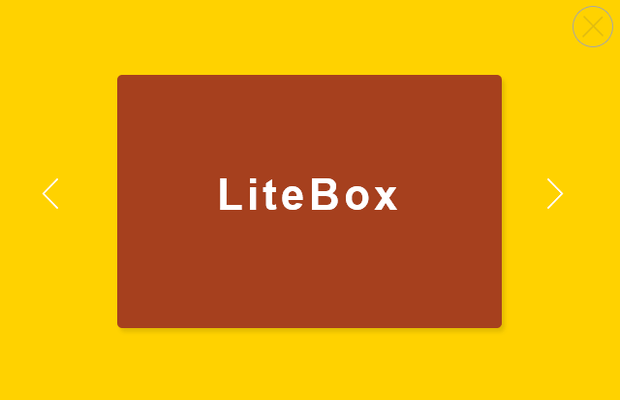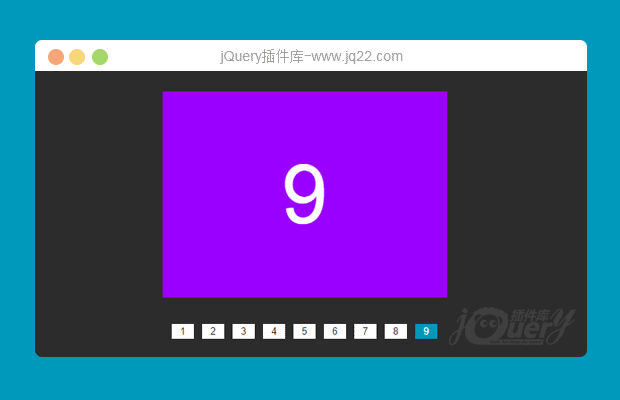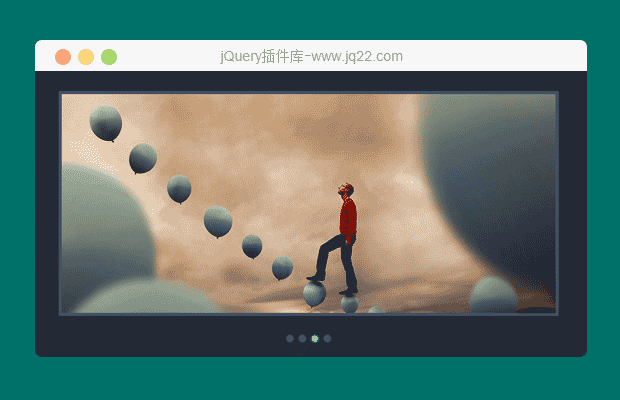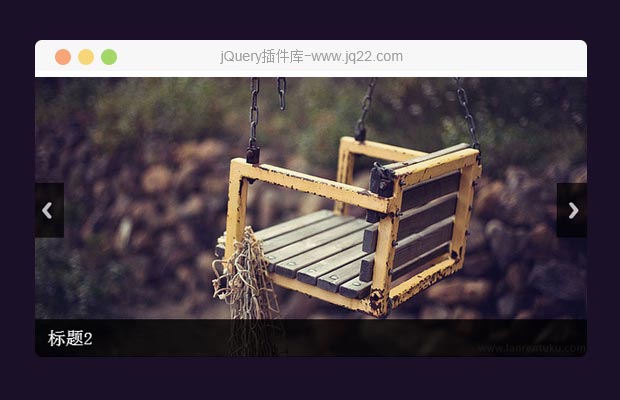

插件描述:一个多功能的,自动检测内容,灯箱/模态窗口以图像,嵌入的内容(YouTube,Vimeo,每日运动和Kickstarter),iframes和内联HTML。
使用方用法
链接两个'litebox.css ','images-loaded.js'和'litebox.js'文件到您的文档。
只需将链接到内容的超链接href属性,给它一个类名,你就会用LiteBox 。
<a href="001.jpg" target="_self" class="litebox"><img src="001-thumb.jpg" alt="Image 001" /></a>
对于嵌入内容,你只需要添加URL到网页,而不是他们所提供的嵌入代码,因为该脚本将动态地创建正确的链接来获取视频。
<a href="https://www.jq22.com/watch?v=[token-id]" target="_self" class="litebox">YouTube</a> <a href="https://www.jq22.com/[token-id]" target="_self" class="litebox">YouTube (Alt)</a> <a href="http://www.jq22.com/[token-id]" target="_self" class="litebox">Vimeo</a> <a href="http://www.jq22.com/video/[token-id]" target="_self" class="litebox">Daily Motion</a> <a href="https://www.jq22.com/projects/[token-id]/[token-name]/" target="_self" class="litebox">KickStarter</a>
要放置在网页的iframe ,只是链接到特定的页面,你会做任何其他的超链接。对于内嵌的内容,你的页面上的某个地方创建元素,将其显示为无,在那里创建你的元素,并给它一个唯一的ID 。然后将这个ID (与包括hashtag )的href属性值。
<a href="http://www.bing.com" target="_self" class="litebox">Iframe</a> <a href="#inline-html-1" target="_self" class="litebox">Inline HTML </a> <div style="display: none;"> <div id="inline-html-1"> <h1 class="bm-large tm-large">Inline HTML Example</h1> <p class="bm-large">In here you can pull any elements from the page to display in the Litebox</p> </div> </div>
您还可以创建一个画廊/组,您可以通过内容添加属性数据litebox组,这适用于任何类型的内容,甚至可以有混合的内容导航。
<a href="001.jpg" target="_self" class="litebox" data-litebox-group="group-1"><img src="001-thumb.jpg" alt="Image 001" /></a> <a href="002.jpg" target="_self" class="litebox" data-litebox-group="group-1"><img src="002-thumb.jpg" alt="Image 002" /></a> <a href="003.jpg" target="_self" class="litebox" data-litebox-group="group-1"><img src="003-thumb.jpg" alt="Image 003" /></a> <a href="004.jpg" target="_self" class="litebox" data-litebox-group="group-1"><img src="004-thumb.jpg" alt="Image 004" /></a>
要调用的插件和设置选项:
$('.litebox').liteBox({
revealSpeed: 400,
background: 'rgba(0,0,0,.8)',
overlayClose: true,
escKey: true,
navKey: true,
callbackInit: function() {},
callbackBeforeOpen: function() {},
callbackAfterOpen: function() {},
callbackBeforeClose: function() {},
callbackAfterClose: function() {},
callbackError: function() {},
callbackPrev: function() {},
callbackNext: function() {},
errorMessage: 'Error loading content.'
});
PREVIOUS:
NEXT:
相关插件-幻灯片和轮播图
讨论这个项目(2)回答他人问题或分享插件使用方法奖励jQ币 评论用户自律公约
😃
- 😀
- 😉
- 😥
- 😵
- 😫
- 😘
- 😡
- 👍
- 🌹
- 👏
- 🍺
- 🍉
- 🌙
- ⭐
- 💖
- 💔
😃
取消回复
- 😀
- 😉
- 😥
- 😵
- 😫
- 😘
- 😡
- 👍
- 🌹
- 👏
- 🍺
- 🍉
- 🌙
- ⭐
- 💖
- 💔







